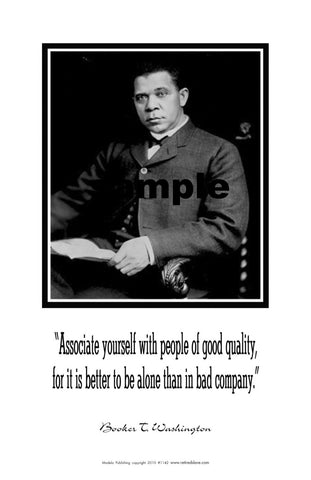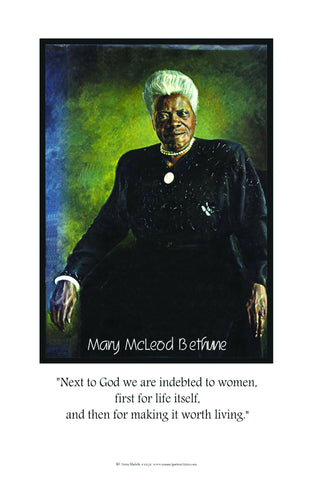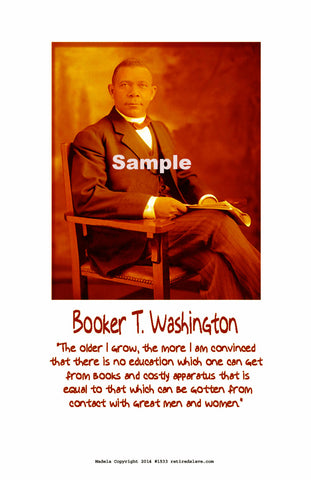SELMA #11740
$ 8.00
Caption from poster__
SELMA
At first glance, Selma, Alabama, 1965, looked just like any other
typical provincial southern town. But a serious problem lurked
among the community only two percent of Selma's eligible African-
American citizens were registered to vote. Selma faced the same
problem as many other towns in Alabama and other southern
states at that time African-American citizens were denied access to
the polls. The story unfolds in Selma's Brown Chapel Church, 1965.
At the pulpit, Dr. Martin Luther King, Jr. rallied for what became the
legendary March on Montgomery, thus leading to a turn of events that
changed the course of civil rights, and history, in the United States.
After the passing of the Civil Rights Act of 1964, African-Americans
in many southern states still were denied access to registration
booths and polls by state officials of all levels. Officials cooked up
various rules to suppress attempts to register, such as limiting
the number of applicants. More often though, African-Americans
approaching the registration booths would find the facilities suddenly,
and without reason, closed. In his sermon at Brown Chapel, Dr. King
inspired his listeners to rise up against the oppression and take what
was rightfully theirsthe right to vote. Dr. King organized several marches
from Selma to Montgomery. In one instance, then-governor George
Wallace forbade the march and ordered hundreds of state police officers
to stop the effort. Police violently blockaded the marchers. Hundreds
were arrested. When the marchers finally completed their journey and
ascended the steps of the state capital, Wallace refused to speak to Dr. King
or acknowledge Kings petition for equal voting rights. Back in Selma at the
Pettus Bridge, Dr. King and civil rights leader Ralph Abernathy organized a
massive crowd to march once again on Montgomery. Attempted determent
and violent altercations with police continued, resulting in injury to marchers
and police. The crowd of now thousands pushed onto Montgomery (though
only 300 were reported to have lasted the journey). By this time, the Selma
incidents were a national media event, drawing an estimated 30,000 people
to Montgomery to meet the marchers, including celebrities like Harry
Belafonte, Nina Simone, and Sammy Davis, Jr. Though President Lyndon
B. Johnson was reportedly outraged at the flagrant discrimination, he ordered
national guards to dispatch against the march on Montgomery. But Dr. King
pressed on, and gained an audience, finally with the federal government, for
his petition. Ironically, President Johnson then came back as a driving force
behind pushing the Voting Rights Bill through legislation. Johnson presented
a bill to congress that became the Voting Rights Act of 1965. The Act grants
federal intervention on state agencies and officials who attempt to prohibit
eligible citizens from registering and going to the polls. In short, the federal
government was, from then on, babysitter to polling jurisdiction in Alabama
and several other southern states. The Johnson administration implemented
the Voting Rights Act on a five-year trial basis. In 1970, it was extended another
five years to 1975, then another seven to 1982, when it was then extended an
additional 25 years. The Voting Rights Act, not yet permanent, comes up for
repeal in 2007.
typical provincial southern town. But a serious problem lurked
among the community only two percent of Selma's eligible African-
American citizens were registered to vote. Selma faced the same
problem as many other towns in Alabama and other southern
states at that time African-American citizens were denied access to
the polls. The story unfolds in Selma's Brown Chapel Church, 1965.
At the pulpit, Dr. Martin Luther King, Jr. rallied for what became the
legendary March on Montgomery, thus leading to a turn of events that
changed the course of civil rights, and history, in the United States.
After the passing of the Civil Rights Act of 1964, African-Americans
in many southern states still were denied access to registration
booths and polls by state officials of all levels. Officials cooked up
various rules to suppress attempts to register, such as limiting
the number of applicants. More often though, African-Americans
approaching the registration booths would find the facilities suddenly,
and without reason, closed. In his sermon at Brown Chapel, Dr. King
inspired his listeners to rise up against the oppression and take what
was rightfully theirsthe right to vote. Dr. King organized several marches
from Selma to Montgomery. In one instance, then-governor George
Wallace forbade the march and ordered hundreds of state police officers
to stop the effort. Police violently blockaded the marchers. Hundreds
were arrested. When the marchers finally completed their journey and
ascended the steps of the state capital, Wallace refused to speak to Dr. King
or acknowledge Kings petition for equal voting rights. Back in Selma at the
Pettus Bridge, Dr. King and civil rights leader Ralph Abernathy organized a
massive crowd to march once again on Montgomery. Attempted determent
and violent altercations with police continued, resulting in injury to marchers
and police. The crowd of now thousands pushed onto Montgomery (though
only 300 were reported to have lasted the journey). By this time, the Selma
incidents were a national media event, drawing an estimated 30,000 people
to Montgomery to meet the marchers, including celebrities like Harry
Belafonte, Nina Simone, and Sammy Davis, Jr. Though President Lyndon
B. Johnson was reportedly outraged at the flagrant discrimination, he ordered
national guards to dispatch against the march on Montgomery. But Dr. King
pressed on, and gained an audience, finally with the federal government, for
his petition. Ironically, President Johnson then came back as a driving force
behind pushing the Voting Rights Bill through legislation. Johnson presented
a bill to congress that became the Voting Rights Act of 1965. The Act grants
federal intervention on state agencies and officials who attempt to prohibit
eligible citizens from registering and going to the polls. In short, the federal
government was, from then on, babysitter to polling jurisdiction in Alabama
and several other southern states. The Johnson administration implemented
the Voting Rights Act on a five-year trial basis. In 1970, it was extended another
five years to 1975, then another seven to 1982, when it was then extended an
additional 25 years. The Voting Rights Act, not yet permanent, comes up for
repeal in 2007.




